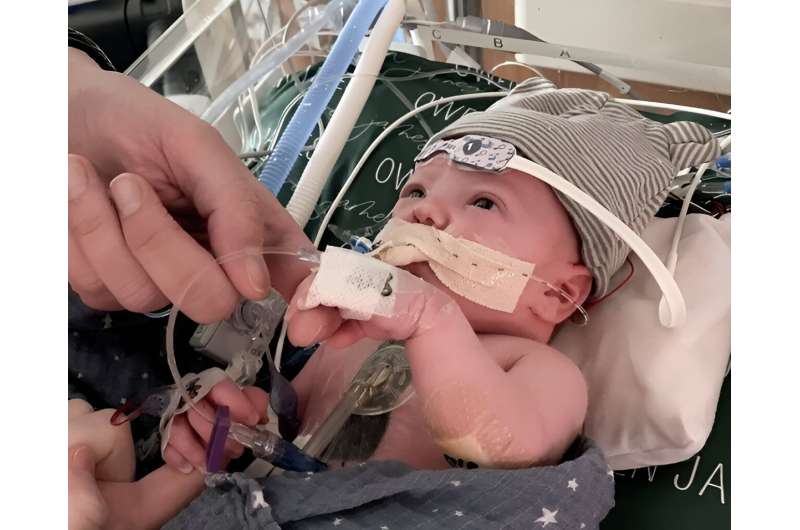This article has been reviewed according to Science X's editorial process and policies. Editors have highlighted the following attributes while ensuring the content's credibility:
fact-checked
peer-reviewed publication
trusted source
proofread
World's first partial heart transplant proves successful in first year

The world's first partial heart transplant has achieved what researchers have spent more than a year hoping for—functioning valves and arteries that grow along with the young patient, as hypothesized by the pioneering team behind the procedure at Duke Health.
The procedure was performed in the spring of 2022, in an infant who needed heart valve replacement. The previous standard of care—using valves that were non-living—would not grow along with the child, requiring frequent replacement, entailing surgical procedures that carry a 50% mortality rate.
A study led by Duke Health physicians, appearing online Jan. 2 in the Journal of the American Medical Association (JAMA), found that the new manner of valve procurement used during the partial heart transplant led to two well-functioning valves and arteries that are growing in concert with the child as if they were native vessels.
"This publication is proof that this technology works, this idea works, and can be used to help other children," said Joseph W. Turek, M.D., Ph.D., first author of the study and Duke's chief of pediatric cardiac surgery, who led the landmark procedure.
The study also found the procedure requires about a quarter of the amount of immunosuppressant medication than a full heart transplant, potentially saving patients from detrimental side effects that might compound over decades.
Turek said the innovation has paved the way for a domino heart transplant, where one heart is able to save two lives. During a domino heart transplant, a patient who has healthy valves but is in need of stronger heart muscle receives a full heart transplant; their healthy valves are then donated to another patient in need, creating a domino effect.
"You could potentially double the number of hearts that are used for the benefit of children with heart disease," Turek said. "Of all the hearts that are donated, roughly half meet the criteria to go on to be used for full transplant, but we believe there's an equal number of hearts that could be used for valves."
"If you introduce the donated hearts that weren't being put to use into the supply chain and add the valves from domino heart transplants, that can create a substantial change," Turek said.
The partial heart transplant procedure has been performed 13 times at four centers around the world, including nine at Duke, several of which have been domino heart transplants.
Turek said bringing this innovation to a clinical trial would be the next step to achieving the volume in procedures that would change the availability of hearts by a large amount.
"This innovation adds a lot to the whole donation community," Turek said, "because it's treating more kids, while also honoring the wishes of selfless donor parents who've given the ultimate gift. It allows them to offer hope to another child in the process."
More information: Joseph W. Turek et al, Partial Heart Transplant in a Neonate With Irreparable Truncal Valve Dysfunction, JAMA (2024). DOI: 10.1001/jama.2023.23823



















